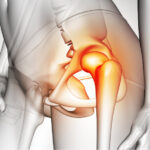Mini Mid-Vastus Approach Shows Similar Radiographic Results To Standard TKA
February 25, 2014
Some surgeons are questioning the viability of implant alignment for mini total knee arthroplasty involving side cuts.
While a recent randomized controlled trial found similar results with standard and mini mid-vastus techniques, researchers discovered inferior radiographic outcomes with mini side-cutting procedures.
Singaporean researchers compared 90 consecutive total knee arthroplasty (TKA) patients allocated to the following three treatment groups: standard TKA (using a medial parapatellar reconstruction), mini mid-vastus, and minimally invasive side-cutting arthroplasty. They found good outcomes in 83.3% of patients in both the standard and mini mid-vastus groups, yet they discovered similar results in only 56.7% of the side-cutting cohort (P=.024).
“We found that the mini mid-vastus technique gave us parallel results to the traditional method of the medial parapatella approach,” said Leon S.S. Foo, MD, an orthopaedist at Singapore General Hospital. “However, this was not the case in the side-cutting technique.”
In the minimally invasive surgery (MIS) groups, Foo and his colleagues found better component alignment in the tibia compared to the femur.
“Even comparing these two MIS techniques, side cuts had poorer outcomes,” Foo said. Investigators noted good tibial alignment in 90% of the mini mid-vastus group vs. 76.7% of side-cut patients. Similarly, 80% of mini mid-vastus patients had good femoral alignment compared to 66.7% of the side-cut group.
Matched Groups
“We also found that with the current instrumentation, the cutting jig-to-bone fixation is inadequate.”
The study included osteoarthritis patients undergoing TKA and excluded those with previous knee surgery and genus valgus. The investigators obtained hospital ethics committee approval for the trial, and all patients gave informed consent, Foo said.
The researchers allocated patients using a randomization table created by an independent statistician. Each group contained 30 patients with similar demographics. All patients, research assistants, physiotherapists and statisticians were blinded to patient allocation.
Patient allocation was done by sealed envelopes, which were opened by the performing surgeons prior to surgery. “All surgeries were performed by two surgeons, each of whom had performed at least 200 total knee surgeries in the past year,” Foo said.
Complications
Postoperatively, two patients in the standard cohort developed deep vein thrombosis. One mini mid-vastus patient had postoperative knee stiffness, which resolved with manipulation and anesthesia. Similarly, one patient in the side-cutting group had postoperative knee stiffness and another developed a superficial wound infection.
The investigators took postop radiographs when patients could stand without flexion. They used seven angles described in a study by P.L. Chin and colleagues to calculate component placement.
“[Angles] A and B looked at bone cuts, C and D looked at the soft tissue balancing and angle E was the most important, looking at the mechanical axis of the lower limb,” Foo said. Angle F noted the flexion angle of the femoral component, while angle T measured the posterior slope of the tibial component.
Defining Good Outcome
“We defined good outcomes for the alignment of femoral and the tibial components as ± 3° of 0° for angles A-E, 0°— 5° for the angle of the femoral component and 0°—7° for the posterior slope of the tibial component,” he said.
Foo and his colleagues found better component alignment in the tibia compared to the femur.
They found a mean of 1.03° varus in the standard knee group, while the mini mid-vastus and side-cut cohorts showed 0.87° and 0.37° of varus, respectively.
According to the researchers’ criteria for good outcomes, 25 patients in both the standard and mini mid-vastus groups showed adequate alignment. Only 17 patients in the side-cutting cohort had similar results.
“We also found that with both MIS techniques, there was better component alignment in the tibia compared to the femur,” Foo said. Of these groups, fewer patients in the side-cutting group had good outcomes when researchers separately examined the tibial and femoral component alignment.
Recommendations
Foo pointed to the “intrinsic problems” of the side-cutting technique to explain the group’s results.
“The saw blade transverses a longer bone cut distance, and any cutting jig-to-bone errors [were] magnified,” he said. “We also found that with the current instrumentation, the cutting jig-to-bone fixation is inadequate.”
Foo also cited the procedure’s limited line of sight and decreased surgical window as challenges. To counteract these difficulties, he suggested using stiff blades, multiple threaded pins to secure the cutting jigs, and computer navigation.
For More Information:
Chin PL, Yang KY, Yeo SJ, et al. Randomized controlled trial comparing radiographic total knee arthroplasty placement using computer navigation against conventional technique. J Arthroplasty. 2005;20(5):618-66.
Foo LSS, Lin CP, Yang K-Y, et al. RCT comparing radiological outcomes of conventional versus minimally invasive techniques for TKA. #138. Presented at the American Academy of Orthopaedic Surgeons 73rd Annual Meeting. March 22-26, 2006. Chicago. Also presented at the 29th Annual Scientific Meeting of the Singapore Orthopaedic Association. Nov. 8-11, 2006. Singapore.
About the author




Doctor’s News
Doctor’s Medical Insights






